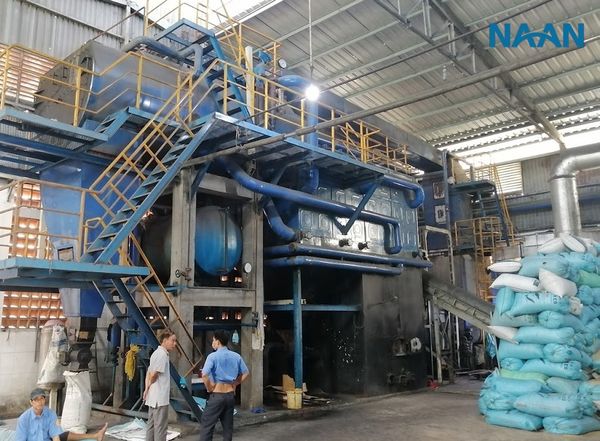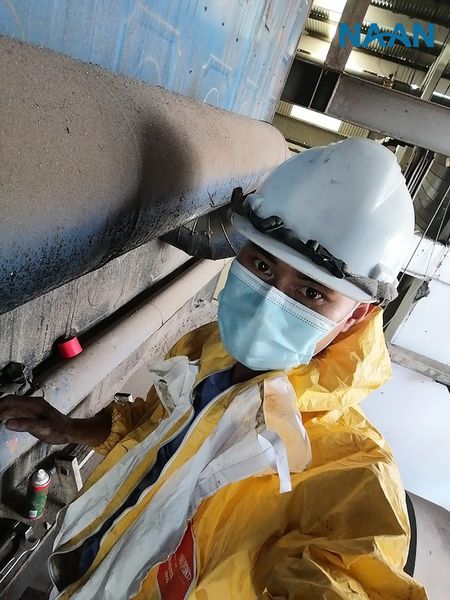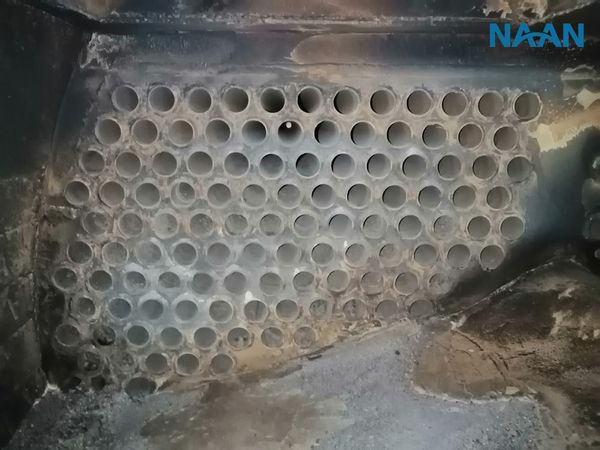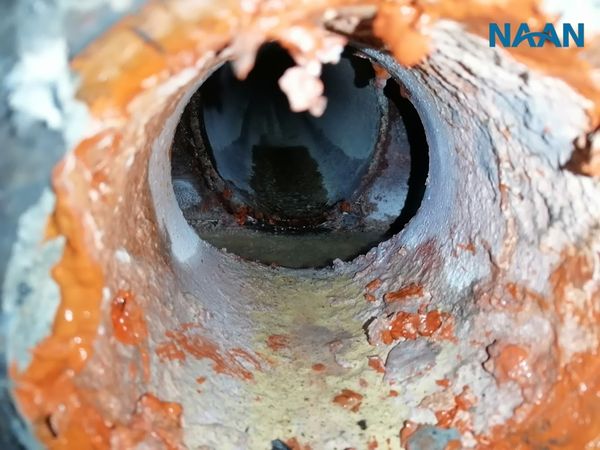GUIDELINES FOR INSPECTING AND ASSESSING INDUSTRIAL BOILER PERFORMANCE

Furnace performance testing and evaluation Steam is essential to optimize boiler operations, save costs and protect the environment
Industrial boilers are important equipment in many manufacturing industries, such as textiles, food, chemicals, and paper manufacturing. Boilers provide energy for production processes and improve the economic efficiency of businesses. However, boilers also consume a lot of fuel and emit exhaust gases that pollute the environment. Therefore, testing and evaluating boiler performance is essential to optimize boiler operations, save costs and protect the environment.
In this article, Naan will guide you how to test and evaluate industrial boiler performance scientifically and accurately. You will learn important indicators to measure boiler performance, such as thermal efficiency, fuel consumption rate, flue gas emission rate and heat loss rate. You will also learn about methods for testing and evaluating boiler performance, such as direct measurement methods, calculation methods and simulation methods. Finally, you will receive suggestions and recommendations to improve your boiler's efficiency and minimize its negative impact on the environment.
Let's start exploring. !
Purpose of checking and evaluating boiler performance
There are two main purposes of checking and evaluating boiler performance steam:
- Evaluate the technical condition of the boiler: Check whether the boiler is damaged, corroded or have other technical problems.
- < li>Identify energy losses: Identify the causes of heat loss, thereby proposing solutions to improve boiler efficiency.
Steps to check and evaluate boiler performance
Checking and evaluating boiler performance includes the following steps:
1 . Checking the outside of the boiler
Checking the outside of the boiler is an important job to ensure the safety and efficiency of the equipment. You need to check the following parts:
- Safety valve: Check for leaks, jamming, or damage. The safety valve helps prevent excessive pressure in the boiler and must be in good working order.
- Pressure gauge: Check for accuracy, legibility and signs of damage. The pressure gauge indicates the current pressure in the boiler and must be referenced to the manufacturer's specification value.
- Supply water tank: Check that there is enough water, no leaks Is there rust, yellowing or residue? The feed water tank supplies water to the boiler and must be maintained at the appropriate water level.
- Piping: Check for leaks, rust, bends or blockages . Pipes carrying water and steam from the boiler to other equipment must be installed firmly and cleanly.
- Oven door: Check to see if it is loose, deformed, cracked or not. Is it worn out? The oven door allows you to enter the boiler for inspection and cleaning. The furnace door must be closed tightly to prevent fire from escaping, causing safety and hygiene for the operator.
Checking the outside of the boiler is a great way to prevent accidents. strengthen and increase the life of the device. You should have this test performed at least once a month or as recommended by the manufacturer. Remember to follow safety rules when working with your boiler and contact a specialist if you discover any problems.
 p>
p>
Wear appropriate protective gear, such as gloves, helmets, goggles, and safety shoes when inspecting the boiler< /p>
2. Checking inside the boiler
Checking inside the boiler is an important job to ensure the safety and efficiency of the equipment. You need to perform regular inspections to detect and fix potential problems, such as leaks, corrosion, cracks, or blockages pipes. To check inside the boiler, you need to follow these steps:
- Turn off the power and fuel source of the boiler. Wait for the boiler to cool completely before opening the lid to inspect.
- Wear appropriate protective gear, such as gloves, helmet, goggles, and safety shoes. If possible, use a flashlight and camera to record the condition inside the boiler.
- Check the boiler components, such as water pipes, fire pipes, safety valves, exhaust valves gas, water valve, and sensors. Pay attention to signs of leaks, corrosion, cracks, or blockages. If you detect any problems, you need to record them and immediately report them to your manager.
- After completing the check, youIt is necessary to close the inspection lid tightly and restart the boiler according to safety procedures. Recheck the pressure and temperature of the boiler to ensure normal operation.

Check for condensation ash inside the boiler fire tube
Checking the inside of the boiler is a job that not only helps prolong the life of the equipment, but also helps save energy and minimize risks. accident risk. You need to perform a thorough and professional inspection to ensure the safety of yourself and your work environment.
3. Thermal Performance Testing
Boiler thermal performance testing is an important process to ensure the safety and efficiency of the equipment. By measuring the temperature, pressure, flow and flue gas composition of the boiler, we can calculate its thermal efficiency, i.e. the ratio between output energy and input energy. The higher the thermal efficiency, the more fuel the boiler saves and reduces environmental pollution. To check the thermal efficiency of the boiler, we need accurate measuring equipment and appropriate calculation methods..
Check the thermal efficiency of the boiler by measuring the inlet temperature steam inlet and outlet, feed water flow and saturated steam flow. Thermal efficiency of the boiler is calculated according to the following formula:

In which:
- hg is En tanpi of exhaust steam (kJ/ kg), You can find the enthalpy of steam based on the conversion from the pressure parameter according to this link. For example, if the pressure of the measured vapor is 8barG, the enthalpy will be: 2773.1 (kJ/kg)
- hf is Enthalpy of input water (kJ/kg). You can quickly calculate by multiplying the temperature of the feed water by 4.18. For example: Water with a temperature of 30oC will have an enthalpy of: 30*4.18= 125.4 (kJ/kg)
- B is the fuel consumption rate on 1 ton of steam (kg)
- Qlvt is the low working calorific value of the fuel. Low calorific value works based on the results of analyzing the calorific value of the fuel, or you can refer to the value in the following table
Calorific value table of some common fuels.
| Thermotherapy | ||
| Fuel | kcal/kg | kJ/kg |
| DO Oil | 10200 | 42697,2 |
| FO oil | 9800 | 41022,8 |
| LPG | 11900 | 49813,4 |
| NG | 7000 | 29302 |
| Sawdust | 3800 | 15906,8 |
| Wood scraps | 2800 | 11720,8 |
| Husk | 3400 | 14232,4 |
| Indo Coal | 5500 | 23023 |
4. Check for energy losses
Check for heat losses due to the following causes:
- Loss due to incomplete combustion of fuel
- Loss due to heat release to the environment
- Loss due to scale
- Loss due to leakage
These losses can be determined by measuring parameters such as temperature, pressure, flow,...
< h3>5. Draw conclusions and propose solutionsBased on the results of testing and evaluation, draw conclusions about technical status and performance of the boiler. Propose solutions to improve boiler efficiency, save energy and reduce operating costs.
 < /p>
< /p>
Image of checking scale inside the combustion chamber water manifold
Some measures to improve furnace efficiency steam
- Check and maintain the boiler periodically, ensuring parts work well, without leaks, pollution or wear.
- Select combustion materials suitable for the type of boiler, have high heat, and produce little exhaust gas and ash. If possible, use renewable energy sources such as biomass, wind or solar.
- Adjust steam pressure and temperature according to usage needs, avoiding waste or shortage . Install automatic measurement and control devices to monitor and adjust these parameters.
- Improve the efficiency of heat exchange between combustion materials and water in the boiler, by regularly Regularly clean the heat exchanger tubes. Reduce the amount of scale in the boiler by using anti-scale agents or changing the operating mode.
- Take advantage of the boiler's waste heat to dry air and heat water before supplying into the oven. Devices such as air dryers and water heaters can be used to take advantage of this excess heat.
By applying the above measures, you can not only increase high boiler efficiency, but also contributes to environmental protection and sustainable development. Let's join hands with Naan to make the world greener!

